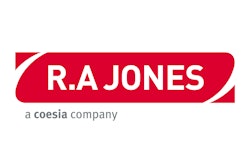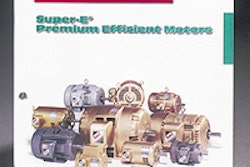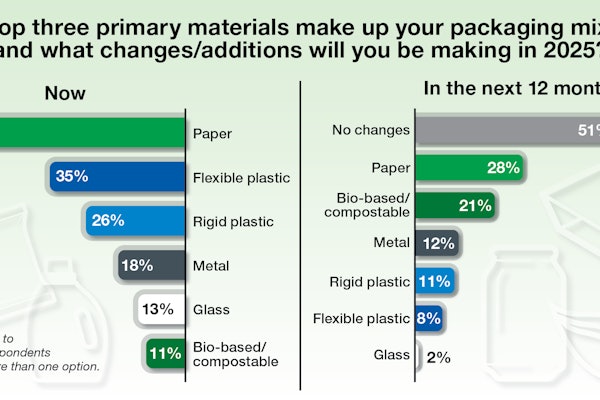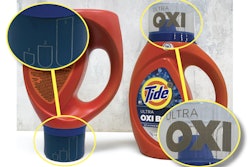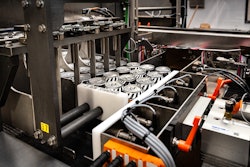Don’t you find it’s tough trying to support multiple protocols, languages, and architectures of the different machines that make up your packaging lines? Want to implement automated data acquisition and analysis but lack the time, money, or resources to handle the networking complexities that are involved? Or maybe you think the nuts and bolts of packaging machinery automation don’t affect you, that such arcane issues are the sole province of your machinery suppliers? What if I had a way to (1) make your investment in packaging machinery go further, (2) slash the lead time it takes to build the equipment, (3) reduce the footprint, and the number of parts (4) increase the throughput, performance, and accuracy? Better, what if I told you there’s nothing to buy, and that it’s been under your nose the whole time?
Nothing ventured, nothing gained Let me tell you something. As a reporter, I’ve been writing about packaging machinery controls and integration for close to four years. Here’s what I’ve learned: Many people rightly complain that there’s no standard for packaging machinery control, architecture, network protocol, programming language, line layouts, and more. Yet for the past two years, an all-volunteer users group that goes by the admittedly inscrutable name of OMAC (for Open Modular Architecture Controls) has been working hard to hammer out standards—guidelines, really—to address all these issues. And from what I can tell, the bulk of packaging machinery buyers haven’t noticed. Or maybe it hasn’t been a priority. It should be. Quick question: Do you compete with P&G, Hershey, M&M Mars, Anheuser-Busch, or Nabisco? Or do you want to glean a little of the know-how that goes into their world-class packaging operations? Then listen to this: They have made this issue a priority. All are members of the OMAC Packaging Workgroup, and several have gone on record saying that they are now seeing smaller, cost-efficient machines with more open architecture controls all as a result of their work with OMAC. This users group has just issued a 42-page document titled Guidelines for Packaging Machinery Automation that is expansive in its coverage and admirable for what it tackles. And it’s just the beginning. By the way, if one company had to pay for the engineering time and talent that went into producing these guidelines, the cost would be off the charts. I have watched these people develop these guidelines over the past two years. These are some of the smartest people I’ve met in this field. They think standardizing on packaging machine controls is a good idea. The Packaging Machinery Manufacturers Institute (PMMI) thinks it’s a good idea. Machine builders actively involved in OMAC such as Klöckner and R.A. Jones think it’s a good idea. All of the automation suppliers involved in OMAC think it’s a good idea. All good reasons why this should be a priority at your company.
Bumpy roads ahead There’s no ignoring this technology. More than half of respondents to a recent survey Packaging World conducted indicated they were going to specify more packaging line networks in the next couple of years. Machine builders, in a similar survey, concur. And it doesn’t take a genius to see that with each passing year, packaging machinery is getting ever-more dependent on ever-more complex electronic technology. Listen to this little nugget from a survey PMMI conducted of packaging machine buyers on behalf of OMAC: Respondents said the four greatest barriers to adopting new technology on packaging lines are cost (59%), level of worker knowledge (42%), untested technology (33%), and connectivity issues (27%). And in PW’s survey of packaging machine builders, the lack of standards was directly cited as one of the main obstacles to cost-effectively deploying today’s sophisticated machine controls for a diverse customer base. All of these obstacles are directly affected, if not outright caused, by lack of packaging machine control standards. Bottom line: Lack of standards is causing a lot of pain to packaging machine buyers as well as builders—pain which will worsen in the years ahead as technology gets ever more sophisticated and machines become increasingly interconnected. Standards or guidelines can only be achieved by engineers from all three camps—end users, machine builders, and automation suppliers—working together to hammer out mutually agreeable direction in which to head. This is precisely what the OMAC Packaging Workgroup is.
Act now! Borrowing a page from self-help groups’ 12-step programs, I’ve designed a little 5-step program that I’d like you to consider: 1. Admit that lack of packaging control standards will directly affect your investment in and support of packaging machinery and related control systems. 2. To quickly educate yourself on what OMAC is and how it can help you, go to www.packworld.com/go/omac for a five-minute explanation. 3. Roll up your sleeves and read the Packaging Workgroup’s Guidelines document. (Go to the official OMAC Web site at www.arcweb.com/omac, click “Motion for Packaging Machinery,” and you’ll see the link to the document.) Some parts may be too technical, but other parts won’t. If you have controls engineers at your company, implore them to read it. Make notes. Discuss it with your peers. Share it with your machinery suppliers. 4. Participate. Provide much-needed feedback. Is the OMAC group on track? Are they way off base? Log onto an interactive forum at http://omac.packworld.com and speak your piece. It’s your direct pipeline to the OMAC Packaging Workgroup. 5. Most important, start encouraging your vendors to build machinery and assemble packaging lines that conform to these guidelines. Over time, this will result in lower costs, shorter lead times, and smaller footprints. The greater number of people who do this, the faster everyone will realize such benefits. Bottom line: Do something. Get involved. Leverage the work of smart people from top-flight companies in all stages of the packaging machine supply chain. Otherwise you’ll remain a victim of the high costs that the absence of standards imposes on you—whether you realize it or not.
See sidebar to this article: OMAC's accomplishments







